 PDG. Swoon.
PDG. Swoon. BUT before I do, I have one last show to recap: Great. White. MATRIX.
Confession: I had to take a brief pause from my shark-ing last week to get some much needed R&R - as it turns out, talking about my love/terror-inducing relationship with sharks is not only physically draining, but mentally and emotionally draining as well (even as I write this, I have Usher lyrics dancing through my head). Why, you might ask? Because I owe it to myself, to you fans-of-fin and to sharks near and far to do the subject justice and pay homage to not just any apex predator, but THE apex predator. But I'M BACK BABY!! And ready to take this last Shark Week 2014 post to pound town.
I've chosen to highlight this particular program in my last post for one reason and one reason only: Paul de Gelder. For those of you yet unfamiliar with this hero among heroes, let me sum it up for you:
- He's hot. Like REAL hot. Like "I-would-get-in-the-water-for-you-and-you-alone" hot.
- He is an Australian Navy diver. Hello accent.
- He was participating in a Navy training exercise (clearly learning the newest puppy-saving techniques) in Sydney Harbour when a Bull Shark attacked him.
- He lost an arm AND a leg in a shark attack but despite that continues to have a very positive outlook on life and healthy respect for the species.
- We're totally Facebook friends.
So let's see what Paul and Andy have in store for us in GREAT WHITE MATRIX. Andy Casagrande and PDG take us to Port Stephens, Australia, where countless Great Whites are roaming the coastline and appear to be feasting on humans. The dynamic duo attempts to uncover the reasons why sharks are congregating here and posits that perhaps the answer to this mystery can actually be found in the bites of these sharks. BUCKLE UP.
Andy has designed a special camera rig that will allow him to capture a Great White bite from all angles during an attack, so all they need to do now is find the sharks (SPOILER ALERT: They totally find them). First, they take to the skies, locating the sharks from a helicopter. They then trail the sharks by boat, finding out that, apparently, and contrary to previously held beliefs, these guys are constantly cruising into the bay areas near surf clubs and people-populated beaches. Clearly they're on the lookout for Jimmy Buffet. Duh. In this part of Australia, there are up to 250 Great Whites in the surf at any one time.
Why here? Because this is the one spot where warm and cold areas of ocean are mixed together by a massive vortex of currents, which supercharges the marine food chain (...I'm just going to say it: Think "sharknado."). So apparently no one has ever filmed sharks in this area from the water...until now. Andy decides to jump in with a juvenile Great White CAGE-FREE!! And we all know that teenagers (shark or otherwise) can be moody and unstable, what with new hormones pumping through their system and nothing but angst to cling to, so this is going to be good.
They lure one Great White close to the boat so Andy can get a good shot, but then the shark lures Andy out from the boat and blocks his return path. And so the student becomes the teacher. Andy does survive. Barely. And then he and PDG head out to an area where larger prey attracts larger Great Whites. Here, they both get in without a cage to check it out. PDG is nervous, which is totes adorable.
After the dive, they meet with a professor who drops some knowledge on them regarding the shark attacks on record and what they mean: apparently, most people bitten by Great Whites are bitten by sharks 2-2.5 meters in length, which is around the size they are when fish stop being a sufficient food source (i.e., when they graduate up to bigger prey), so they are probably just giving humans exploratory bites that are confused for attacks.
So PDG and Andy take this knowledge to the other side of the country - to the Neptune Islands, where huge adult Great Whites are known to feed. Andy gets in the cage with his rigged up camera arc and "a notoriously aggressive dominant male," Sidewinder, shows up. The crew starts baiting the water while Andy films from below, and Andy nails the shot. From his footage, we learn that in an adolescent shark, the lower jaw is poised to bite but the upper jaw remains stationary (i.e., an attack from a juvenile Great White is survivable...as opposed to an attack from Juvenile, the rapper). But with an adult, its jaws reach maximum width when it bites, and it bites not just with its teeth, but with its entire body. Instant DEATH.
Factual Takeaways and Interesting Tidbits:
- White Sharks in Capetown, South Africa, will use penguins as target practice while they are learning to hunt seals. WHAT?!!
- Juvenile White Sharks learn to hunt surface level prey in the shallows by going after birds chilling on the surface.
- Attacks on Australia's West Coast are on the rise because sharks follow populations of seals from the Neptune Islands to that area of the coast.
Bottom Line: "With Great White Sharks, size matters."
So there you have it - Shark Week 2014. AND SCENE.

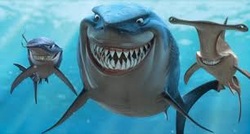

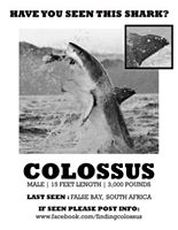
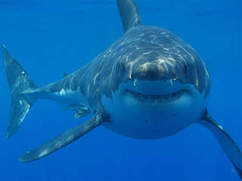

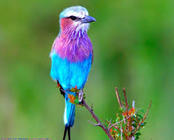
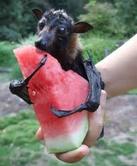
 RSS Feed
RSS Feed